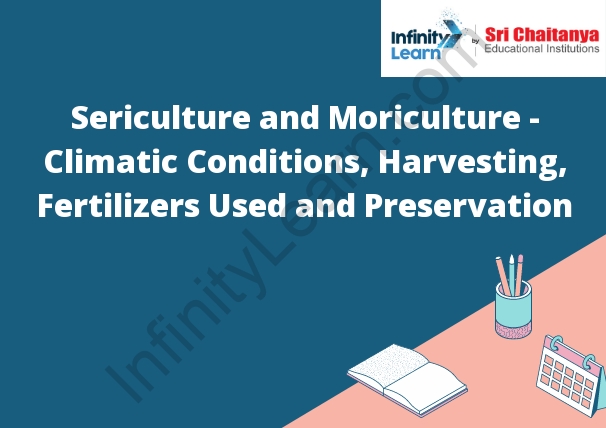Table of Contents
Sericulture and Moriculture – Explanation
Sericulture is the process of rearing silkworms for the production of raw silk. The word sericulture is derived from the Latin word sericum, meaning “silk”. Silkworms are the larval form of the domesticated silk moth, Bombyx mori. The process of sericulture begins by breeding healthy silkworms and then feeding them a diet of mulberry leaves. As the silkworms eat, they produce a fine, strong thread of silk. This thread is then wound onto spools and boiled to kill the worms. Finally, the thread is shipped to silk mills where it is woven into fabric.
Moriculture is the cultivation of mushrooms. The word moriculture is derived from the Latin word mori, meaning “mushroom”. Mushrooms are the fruiting bodies of fungi. The process of moriculture begins by growing mushroom spores in a controlled environment. The spores are then fed a diet of organic matter, such as straw or wood chips. As the mushrooms eat, they produce a fine, strong thread of mycelium. This thread is then dried and packaged for sale.

What is Sericulture?
Sericulture is the cultivation of silkworms for the production of raw silk. The silkworms are fed a diet of mulberry leaves, and the silk they produce is wound around their bodies. When the worms are ready to pupate, they are boiled in hot water, which kills them and separates the silk from their bodies.
What is Moriculture?
Moriculture is the cultivation of mushrooms. It is a relatively new field, having been developed in the early 1900s. Before then, mushrooms were collected from the wild.
Optimum Climatic Conditions for Moriculture
The optimum climatic conditions for moriculture are a temperature range of 18-25 degrees Celsius and a relative humidity of 80-90%.
Soil Conditions for Moriculture
The soil requirements for moriculture are the same as for other types of agriculture. The soil must be fertile, well drained, and have a good water retention capacity.
Spacing of Mulberry Plants
Mulberry plants should be spaced 8 to 12 feet apart, depending on the cultivar.
Harvesting of Mulberry Leaves from the Plant
Mulberry leaves can be harvested by clipping them off the stem with scissors or a knife.
Fertilizers used in Moriculture
Fertilizers are used in Moriculture to increase the growth of the Mora tree. The three most common types of fertilizers are nitrogen, phosphorus, and potassium.
Preservation of Leaves
The leaves of a plant are important for photosynthesis, gas exchange, and water balance. To maintain these functions, leaves must be able to open and close to the sun and wind.
Leaves are usually preserved in a museum by drying them. The leaves are cut into small pieces and placed on a screen. The screen is then placed in an oven at a low temperature. The leaves are dried slowly so that they do not crumble.
Fertilizers and Preservations Used in the Wine Industry
Fertilizers and preservatives used in the wine industry can vary depending on the type of wine being made. For example, red wines may require more sulfur dioxide than white wines, as the juice is exposed to the air for a longer period of time. Winemakers may also add nitrogen and phosphorus to the juice to help the fermentation process. Preservatives such as sulfur dioxide and sulfites are also often used to help prevent spoilage and oxidation.









